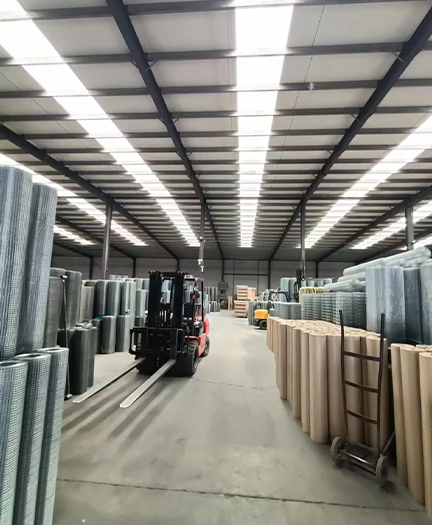-
 Afrikaans
Afrikaans -
 Albanian
Albanian -
 Amharic
Amharic -
 Arabic
Arabic -
 Armenian
Armenian -
 Azerbaijani
Azerbaijani -
 Basque
Basque -
 Belarusian
Belarusian -
 Bengali
Bengali -
 Bosnian
Bosnian -
 Bulgarian
Bulgarian -
 Catalan
Catalan -
 Cebuano
Cebuano -
 China
China -
 Corsican
Corsican -
 Croatian
Croatian -
 Czech
Czech -
 Danish
Danish -
 Dutch
Dutch -
 English
English -
 Esperanto
Esperanto -
 Estonian
Estonian -
 Finnish
Finnish -
 French
French -
 Frisian
Frisian -
 Galician
Galician -
 Georgian
Georgian -
 German
German -
 Greek
Greek -
 Gujarati
Gujarati -
 Haitian Creole
Haitian Creole -
 hausa
hausa -
 hawaiian
hawaiian -
 Hebrew
Hebrew -
 Hindi
Hindi -
 Miao
Miao -
 Hungarian
Hungarian -
 Icelandic
Icelandic -
 igbo
igbo -
 Indonesian
Indonesian -
 irish
irish -
 Italian
Italian -
 Japanese
Japanese -
 Javanese
Javanese -
 Kannada
Kannada -
 kazakh
kazakh -
 Khmer
Khmer -
 Rwandese
Rwandese -
 Korean
Korean -
 Kurdish
Kurdish -
 Kyrgyz
Kyrgyz -
 Lao
Lao -
 Latin
Latin -
 Latvian
Latvian -
 Lithuanian
Lithuanian -
 Luxembourgish
Luxembourgish -
 Macedonian
Macedonian -
 Malgashi
Malgashi -
 Malay
Malay -
 Malayalam
Malayalam -
 Maltese
Maltese -
 Maori
Maori -
 Marathi
Marathi -
 Mongolian
Mongolian -
 Myanmar
Myanmar -
 Nepali
Nepali -
 Norwegian
Norwegian -
 Norwegian
Norwegian -
 Occitan
Occitan -
 Pashto
Pashto -
 Persian
Persian -
 Polish
Polish -
 Portuguese
Portuguese -
 Punjabi
Punjabi -
 Romanian
Romanian -
 Russian
Russian -
 Samoan
Samoan -
 Scottish Gaelic
Scottish Gaelic -
 Serbian
Serbian -
 Sesotho
Sesotho -
 Shona
Shona -
 Sindhi
Sindhi -
 Sinhala
Sinhala -
 Slovak
Slovak -
 Slovenian
Slovenian -
 Somali
Somali -
 Spanish
Spanish -
 Sundanese
Sundanese -
 Swahili
Swahili -
 Swedish
Swedish -
 Tagalog
Tagalog -
 Tajik
Tajik -
 Tamil
Tamil -
 Tatar
Tatar -
 Telugu
Telugu -
 Thai
Thai -
 Turkish
Turkish -
 Turkmen
Turkmen -
 Ukrainian
Ukrainian -
 Urdu
Urdu -
 Uighur
Uighur -
 Uzbek
Uzbek -
 Vietnamese
Vietnamese -
 Welsh
Welsh -
 Bantu
Bantu -
 Yiddish
Yiddish -
 Yoruba
Yoruba -
 Zulu
Zulu
Effective Safety Netting Solutions for Railings in Various Environments
Safety Netting for Railings Enhancing Safety in Construction and Industrial Environments
In various construction and industrial settings, safety is of utmost importance. Workers face numerous hazards, particularly when operating at heights. One effective solution to mitigate these risks is the implementation of safety netting for railings. This article explores the importance of safety netting, its applications, and best practices for ensuring worker safety.
Understanding Safety Netting
Safety netting is a protective measure designed to catch falling objects and prevent workers from slipping or falling over the edge of elevated surfaces. Typically made from durable materials such as polypropylene or nylon, safety nets are engineered to withstand significant impact and are often used in conjunction with guardrails to enhance overall safety.
Importance of Safety Netting
The use of safety netting for railings is critical in environments where the risk of falls is prevalent. According to the Occupational Safety and Health Administration (OSHA), falls are one of the leading causes of fatalities in the workplace. By installing safety nets, employers can significantly reduce the likelihood of accidents. These nettings serve as a physical barrier, offering an extra layer of protection and peace of mind for workers engaged in high-risk tasks.
Additionally, safety netting can serve to protect not only workers but also pedestrians and individuals in the vicinity of construction sites. By containing falling tools, debris, and materials, safety netting helps to create a secure environment, reducing liability risks for contractors and operators.
Applications of Safety Netting
Safety netting finds diverse applications across various industries. In the construction sector, it is frequently employed during the installation of scaffolding and exterior facades to safeguard workers handling materials at height. In warehousing and manufacturing, safety nets can be utilized along the edges of platforms or production lines to prevent items from falling and causing accidents.
Furthermore, safety netting is increasingly being adopted in specialized sectors, such as maintenance of bridges, high-rise buildings, and wind turbines, where workers often operate in precarious positions. In these contexts, safety netting provides essential support and reduces the potential for serious injuries.
safety netting for railings

Best Practices for Implementing Safety Netting
To maximize the effectiveness of safety netting for railings, employers should follow several best practices
1. Assessment of Risks Before installation, conduct a thorough risk assessment to identify potential fall hazards specific to the worksite. This will help determine the appropriate type of safety netting required.
2. Proper Installation It is vital to ensure that safety nets are installed correctly according to manufacturer guidelines. Nets should be securely anchored to withstand impact and should be tensioned adequately to prevent sagging.
3. Regular Inspections Safety netting should be inspected regularly for wear and tear. Any signs of damage—such as fraying, tears, or weakening of the anchoring points—should be addressed immediately to maintain their protective capabilities.
4. Training and Awareness Workers should be trained on the importance and proper use of safety netting. They should be made aware of the safety protocols associated with operating near railings equipped with netting.
5. Integration with Other Safety Measures Safety netting should not be seen as a standalone solution. Instead, integrate it with other safety measures, such as guardrails, personal protective equipment (PPE), and safety training programs for employees.
Conclusion
Safety netting for railings is an essential element in the comprehensive strategy to ensure worker safety in high-risk environments. By preventing falls and protecting both workers and the public, safety netting contributes significantly to creating a safer workplace. By implementing best practices and fostering a culture of safety, employers can protect their most valuable assets—their workers.
-
Stainless Steel Mesh SolutionsNewsMay.06,2025
-
Protecting Your Farm with Smart SolutionsNewsMay.06,2025
-
Practical Mesh Solutions for Your Home and GardenNewsMay.06,2025
-
Nylon Mesh SolutionsNewsMay.06,2025
-
Fish Breeding Nets for AquariumsNewsMay.06,2025
-
Essential Mesh Solutions for ConstructionNewsMay.06,2025











